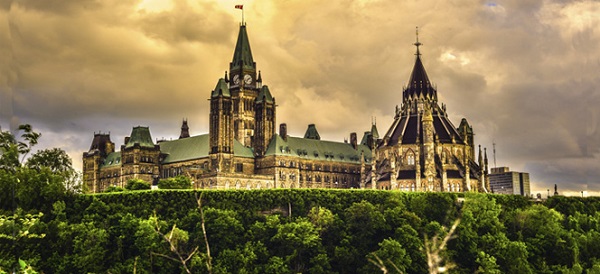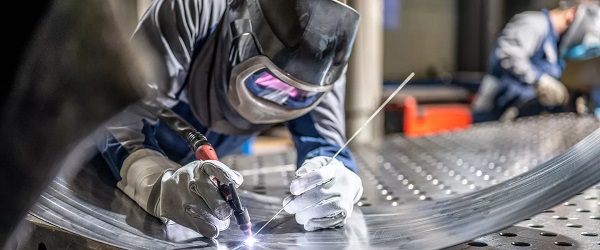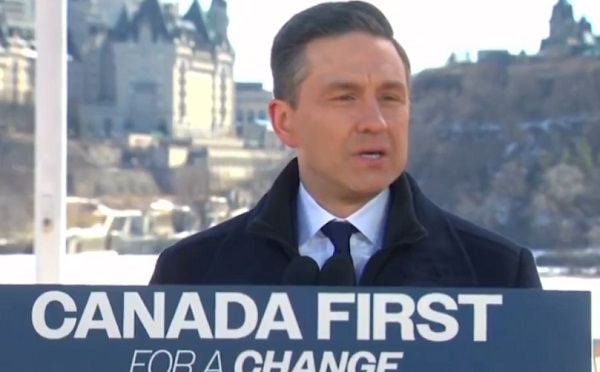Business
It’s time to supersize charitable tax credits, not political ones

From the Canadian Taxpayers Federation
By Jay Goldberg
Are political parties more valuable than charities?
You’d be hard pressed to find a single Canadian that thinks so, but that’s how they’re treated under today’s tax system.
The way tax credits are handed out in Canada needs to be revamped. The system is broken, both federally and provincially. It’s time to stop giving big tax credits for political donations. Instead, let’s give tax breaks to folks when they donate to charity.
Consider this present-day scenario.
Last year, Sally donated $250 to the Conservative Party of Canada and another $250 to Save the Children. Jim donated $250 to the Ontario Liberals and another $250 to the Make a Wish Foundation.
When tax time came, the federal government let Sally use both her donations to lower her tax bill.
But one donation counted a lot more against Sally’s tax bill than the other. And it’s not the one that you might think.
For the Save the Children donation, Sally’s $250 donation netted a $44.50 credit towards her tax bill. The province added in another $15.90. That means she will get $60.40 back at tax time.
How about her political contribution?
Because it was a federal political party donation, Sally only received a federal tax credit. But the feds will give her back $187.50 when she files her taxes.
In other words, the amount Sally gets back from donating to a political party is three times as much as her donation to charity.
For those paying income tax, the tax credit situation for a $250 donation, both to charities and political parties, is identical at the provincial level.
Jim gets $60.40 back at tax time from his charitable donation and $187.50 from Queen’s Park for his provincial political donation.
That means the money Jim gets back from his provincial political donation, like Sally’s at the federal level, is three times larger than what he gets back for donating to charity.
On what sane planet should both the feds and Queen’s Park be giving out tax credits for political donations so much more generous than tax credits for making donations to charity?
Making a terminally ill child’s wishes come true should be valued more than helping politicians pay for political attack ads.
Canada’s provincial and federal governments should take funds that go toward tax credits for political donations and reallocate them to tax credits for charitable donations. Credits for political donations should be scrapped.
Tax credits exist to try to encourage behaviour. The whole idea behind it is that if you give folks a bit of a financial incentive to make a donation, they’ll be more likely to do so.
That makes sense when it comes to charities. It’s a worthy policy goal to have a tax credit in place to encourage Canadians to make donations to organizations that work to make a meaningful difference in people’s lives.
But why should taxpayers be incentivizing donations to political parties? Why encourage Canadians to shell out money that will end up paying for leaflets, lawn signs and attack ads?
Some try to justify the tax credit regime by arguing that because political parties can’t take corporate or union donations, they need help encouraging individuals to make donations.
But ask anyone on the street, and they’ll tell you it’s charitable donations, not political ones, that should be encouraged.
If political parties can’t raise as much money without the tax credit, they should just spend less money. No one is going to shed tears over seeing fewer attack ads on television.
The sole goal of a political party is to get themselves elected. Why should they get credits of up to 75 per cent while charitable donations get trivial treatment?
It’s time to stop treating political parties like charities on steroids. That means putting political donation tax credits on the chopping block. Instead, the same money can and should be used to supersize tax credits for charitable donations.
2025 Federal Election
Alcohol tax and MP pay hike tomorrow (April 1)

The Canadian Taxpayers Federation is calling on all party leaders to stop a pair of bad policies that are scheduled to happen automatically on April 1: pay raises for members Parliament and another alcohol tax increase.
“Party leaders owe taxpayers answers to these two questions: Why do you think you deserve a pay raise and why should Canadians pay higher taxes on beer and wine?” said Franco Terrazzano, CTF Federal Director. “Politicians don’t deserve a raise while millions of Canadians are struggling.
“And the last thing Canadians need is another tax hike when they pour a cold one or uncork a bottle with that special someone.”
MPs give themselves pay raises each year on April 1, based on the average annual increase in union contracts with corporations with 500 or more employees.
The CTF estimates tomorrow’s pay raise will amount to an extra $6,200 for backbench MPs, $9,200 for ministers and $12,400 for the prime minister, based on contract data published by the federal government.
After tomorrow’s pay raise, backbench MPs will receive a $209,300 annual salary, according to CTF estimates. A minister will collect $309,100 and the prime minister will take home $418,600.
Meanwhile, the alcohol escalator automatically increases excise taxes on beer, wine and spirits every year on April 1, without a vote in Parliament. Alcohol taxes will increase by two per cent tomorrow, costing taxpayers about $40 million this year, according to Beer Canada estimates.
The alcohol escalator tax has cost taxpayers more than $900 million since it was imposed in 2017, according to Beer Canada estimates.
“Politicians are padding their pockets on the same day they’re raising beer taxes and that’s wrong,” Terrazzano said. “If party leaders want to prove they care about taxpayers, they should stop the MP pay raises.
“And if party leaders care about giving Canadian brewers, distillers and wineries a fighting chance against tariffs, it’s time to stop hitting them with alcohol tax hikes year after year.”
The CTF released Leger polling showing 79 per cent of Canadians oppose tomorrow’s MP pay raise.
2025 Federal Election
Poilievre To Create ‘Canada First’ National Energy Corridor

From Conservative Party Communications
Poilievre will create the ‘Canada First’ National Energy Corridor to rapidly approve & build the infrastructure we need to end our energy dependence on America so we can stand up to Trump from a position of strength.
Conservative Leader Pierre Poilievre announced today he will create a ‘Canada First’ National Energy Corridor to fast-track approvals for transmission lines, railways, pipelines, and other critical infrastructure across Canada in a pre-approved transport corridor entirely within Canada, transporting our resources within Canada and to the world while bypassing the United States. It will bring billions of dollars of new investment into Canada’s economy, create powerful paycheques for Canadian workers, and restore our economic independence.
“After the Lost Liberal decade, Canada is poorer, weaker, and more dependent on the United States than ever before,” said Poilievre. “My ‘Canada First National Energy Corridor’ will enable us to quickly build the infrastructure we need to strengthen our country so we can stand on our own two feet and stand up to the Americans.”
In the corridor, all levels of government will provide legally binding commitments to approve projects. This means investors will no longer face the endless regulatory limbo that has made Canadians poorer. First Nations will be involved from the outset, ensuring that economic benefits flow directly to them and that their approval is secured before any money is spent.
Between 2015 and 2020, Canada cancelled 16 major energy projects, resulting in a $176 billion hit to our economy. The Liberals killed the Energy East pipeline and passed Bill C-69, the “No-New-Pipelines” law, which makes it all but impossible to build the pipelines and energy infrastructure we need to strengthen the Canadian economy. And now, the PBO projects that the ‘Carney cap’ on Canadian energy will reduce oil and gas production by nearly 5%, slash GDP by $20.5 billion annually, and eliminate 54,400 full-time jobs by 2032. An average mine opening lead time is now nearly 18 years—23% longer than Australia and 38% longer than the US. As a result of the Lost Liberal Decade, Canada now ranks 23rd in the World Bank’s Ease of Doing Business Index for 2024, a seven-place drop since 2015.
“In 2024, Canada exported 98% of its crude oil to the United States. This leaves us too dependent on the Americans,” said Poilievre. “Our Canada First National Energy Corridor will get us out from under America’s thumb and enable us to build the infrastructure we need to sell our natural resources to new markets, bring home jobs and dollars, and make us sovereign and self-reliant to stand up to Trump from a position of strength.”
Mark Carney’s economic advice to Justin Trudeau made Canada weaker while he and his rich friends made out like bandits. While he advised Trudeau to cancel Canadian energy projects, his own company spent billions on pipelines in South America and the Middle East. And unlike our competitors Australia and America, which work with builders to get projects approved, Mark Carney and Steven Guilbeault’s radical “keep-it-in-the-ground” ideology has blocked development, killed jobs, and left Canada dependent on foreign imports.
“The choice is clear: a fourth Liberal term that will keep our resources in the ground and keep us weak and vulnerable to Trump’s threats, or a strong new Conservative government that will approve projects, build an economic fortress, bring jobs and dollars home, and put Canada First—For a Change.”
-

 Business1 day ago
Business1 day agoCuba has lost 24% of it’s population to emigration in the last 4 years
-

 2025 Federal Election23 hours ago
2025 Federal Election23 hours ago2025 Federal Election Interference from China! Carney Pressed to Remove Liberal MP Over CCP Bounty Remark
-

 Business2 days ago
Business2 days agoTariff-driven increase of U.S. manufacturing investment would face dearth of workers
-

 Media24 hours ago
Media24 hours agoTop Five Huge Stories the Media Buried This Week
-

 Uncategorized22 hours ago
Uncategorized22 hours agoPoilievre on 2025 Election Interference – Carney sill hasn’t fired Liberal MP in Chinese election interference scandal
-

 Censorship Industrial Complex18 hours ago
Censorship Industrial Complex18 hours agoWelcome to Britain, Where Critical WhatsApp Messages Are a Police Matter
-

 Education2 days ago
Education2 days agoOur Kids Are Struggling To Read. Phonics Is The Easy Fix
-

 Economy2 days ago
Economy2 days agoClearing the Path: Why Canada Needs Energy Corridors to Compete










